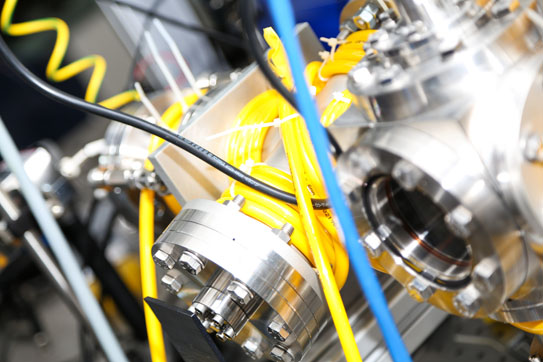Integrated atom chips
Atoms which have been cooled down to sub-Kelvin temperatures have demonstrated some of the purest quantum effects ever seen. These can be used in practical applications to make the most accurate atomic clocks, the most sensitive measurements of gravity and rotations (i.e. acceleration), high resolution magnetometers, and quantum computers. To unshackle these experiments from the laboratory requires the miniaturization and integration of the entire infrastructure. A decade of research has allowed many of the above experiments to be performed on microfabricated surfaces (known as atom chips) which is a first step to miniaturization but which can currently only happen in the laboratory because of the need for laser systems, vacuum systems, opto-electronics, detection systems, control electronics and mains power. We aim to explore how materials and methods from the planar microfabrication industry can be used, or adapted, to miniaturize and integrate ultracold atom apparatus. We see this as an important step to move from 'chip in a lab' demonstrations to realistic 'lab in a chip' technology.
Ultra high vacuum (UHV) micropackaging
All ultracold experiments are performed in a vacuum better than 10-9mbar to reduce collisions, and thus decoherence, with background gases. Standard UHV systems are heavy, bulky and power hungry. We are exploring methods and materials to permanently seal UHV in micro-litre cavities. This involves thin film getters, advanced bonding techniques, low permeability materials and thorough cleaning regimes.
Atom sources
Once UHV is obtained, a source of vapour phase alkali atoms is required for cooling and manipulation. The source must be stable during the chip manufacture, produce very pure vapour with negligible additional species, and able to be controlled for efficient trap loading. We are looking into adapting commercial sources as well as developing our own compounds, and looking at methods to control the vapour flow.
Novel magneto-optical trap (MOT) geometries
A magneto optical trap (MOT) uses laser cooling to slow down vapour-phase atoms from a room-temperature source and then confine them using magnetic fields. Standard geometries are unsuitable to integrated atom chips and so we are exploring single-viewport configurations requiring fewer laser beams and lower power.
Stabilized laser microsystems
Laser cooling requires highly stabilized lasers (~<1 part in 108) which can be switched and detuned at high speeds (<microsecond), and have intensities of tens mW/cm2. Miniaturization of these systems is as important as the atoms chips themselves, as the latter does not function without the former. We are looking into novel ways to control the lasers as well as producing frequency references to stabilize against.
Planar micro optics
Real world applications of integrated atom chips require small, rugged and mass-producible devices. The complex optical systems found in laboratories are unlikely to fulfil all of these properties so we are exploring alternative solutions using optical fibres, optical-MEMS, and planar micro-optics.
People involved:
Timothy Freegarde
Matt Himsworth
Mark Spelling
Michael Kraft
Atomic ensembles in optical lattices
Ultra-cold atoms in optical lattices provide a system with utmost control. All degrees of freedom of such many-body systems can be controled at the quantum limit. Theorists at the QTC investigate new physics effects including cold collisions and the quantum simulation of Hamiltonian dynamics of complex condensed matter systems but also quantum field thoeries.
People involved:
Janne Ruostekoski
Carlos Lobo
